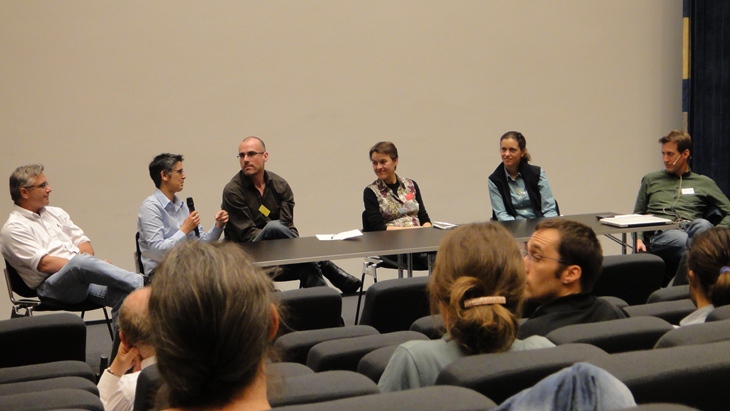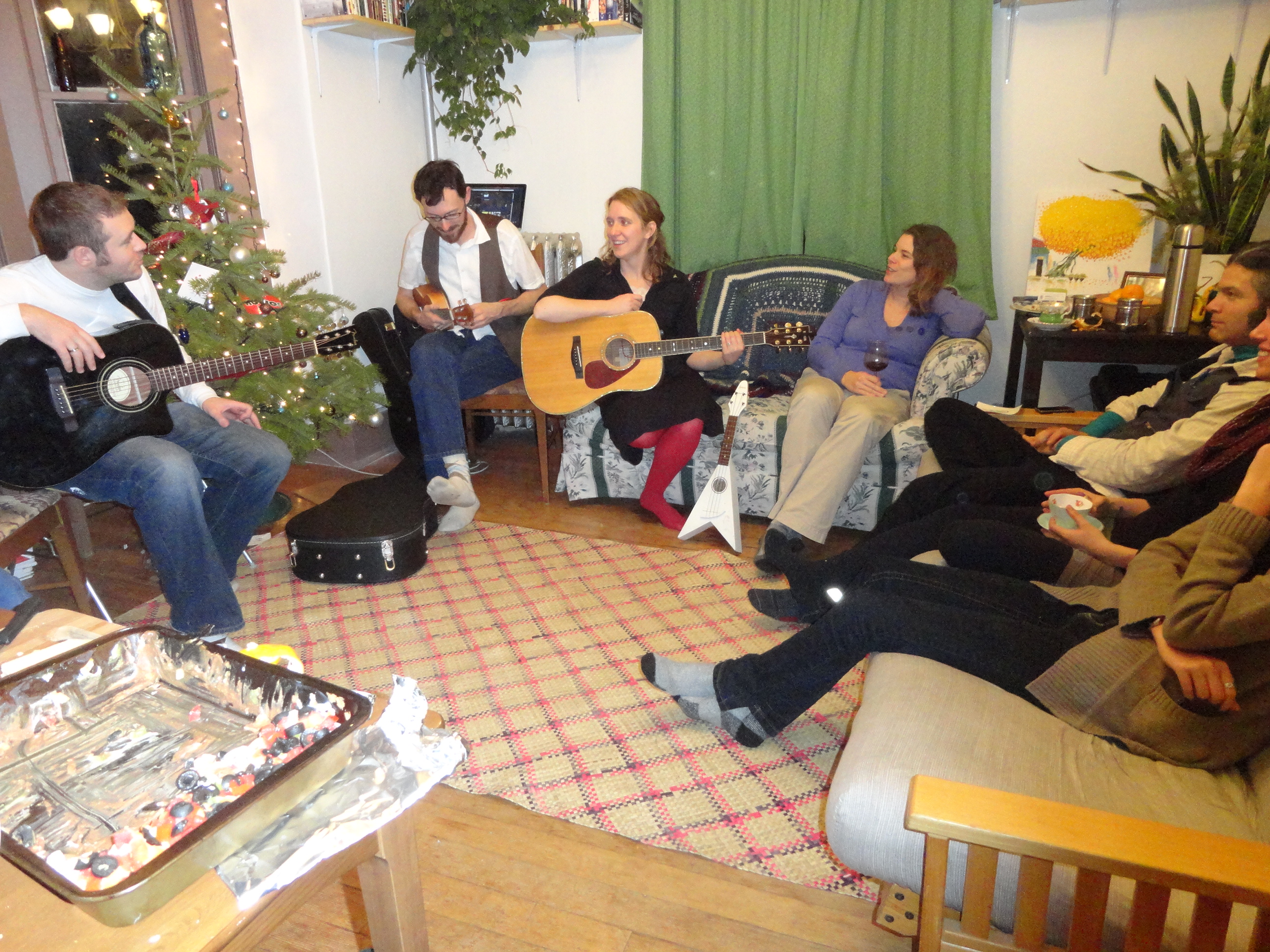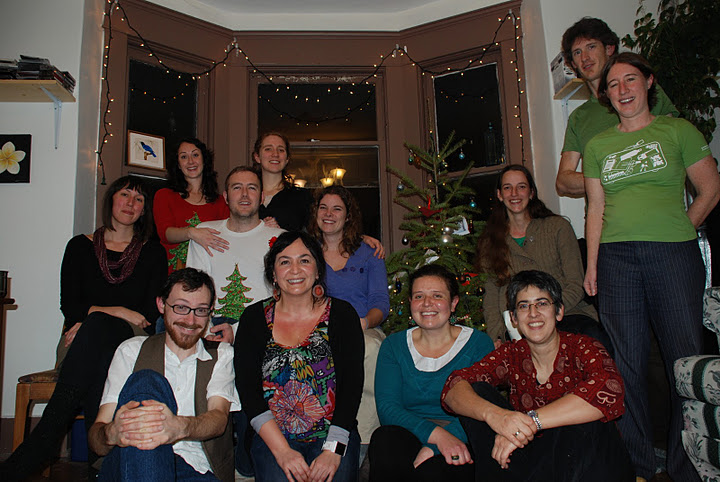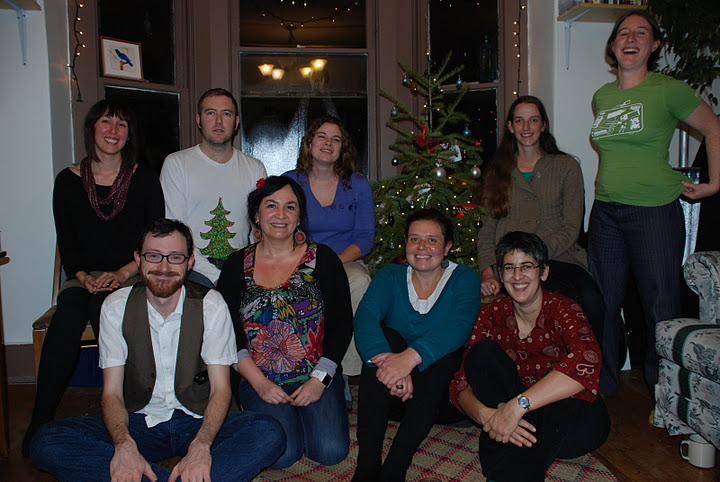…it’s being decided right now, right here in Zurich! But don’t fear! Diane is part of the discussion, so we’ll be alright.
Our artist in the lab
Genn is not only a great ecologist but also an amazing artist and she somehow manages to combine these talents: Check out the mighty mites!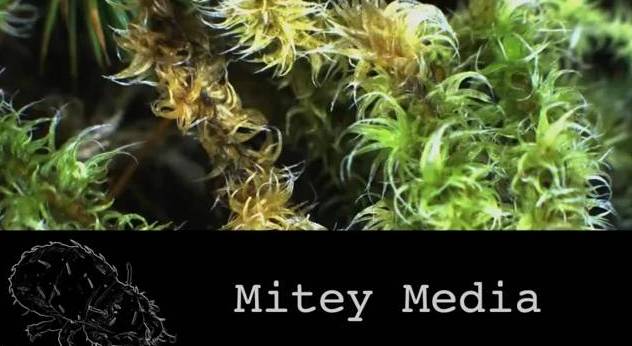
Melissa Master of Science!
Last week our dear Melissa successfully defended her MSc thesis. Melissa’s work pioneered a series of studies at the landscape scale in our lab investigating habitat fragmentation and land use change’s effects on community composition and ecosystem function. Her study on tropical forests documented differences in invertebrate diversity across habitat types, including both species gains and losses due to land conversion and habitat fragmentation, and showed that these two processes had divergent effects on litter decomposition. Her results emphasize the need for large forest reserves to prevent considerable losses of continuous forest fauna.
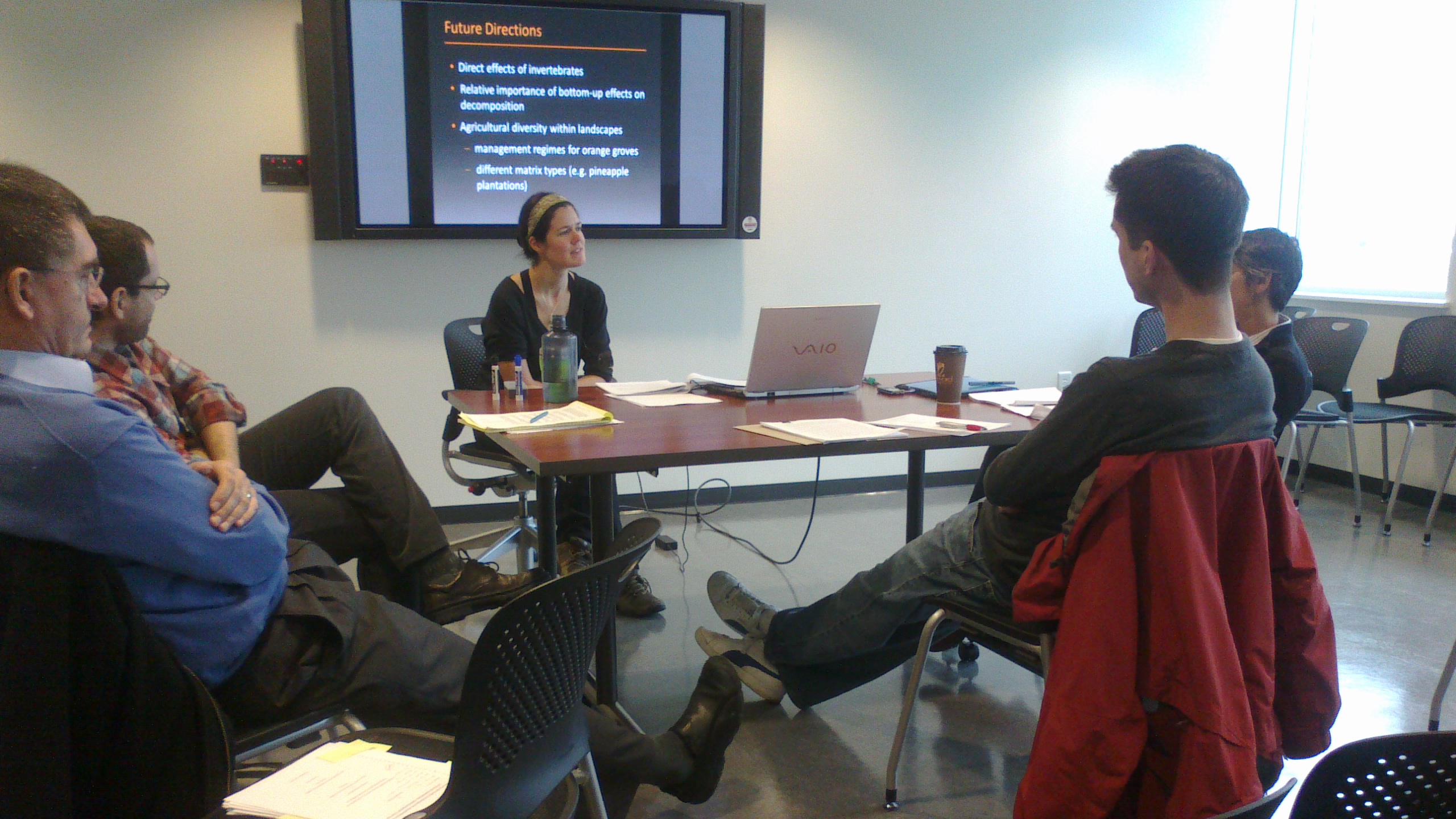
Our lab proudly celebrates the occasion.
Congratulations to Melissa!
Celebrating Christmas à la Srivastava Lab
This year we were lucky enough to celebrate the Holidays all together, just before Robin and Andrew leave for the field.
Thanks to Andrew and Angela for hosting a lovely -and delicious!- evening, thanks to Antonia and Angélica for documenting the event, to our lab mates with great musical talents, and to all the partners and family that joined us that day.
We missed Youhua (who couldn’t come that night), Pavel, Alathea, Melissa, Silvina, Martin/Mariana and of course crazy Jana. We toasted -with nothing else than chilean pisco!- for an upcoming year of good fieldwork, good science, and exciting new adventures for everybody.
Happy 2012 from the Srivastava Lab!
the lab together
As a lab, we rarely are all assembled in the same place: usually, at least a few of us are off in the field. This week marks the end of a brief period of togetherness, as Angie and Virginia have returned from the field, and Robin and I have not yet left.
This provided an interesting opportunity last week when Andy Gonzalez, from McGill university, asked us “What serves as the overall theoretical framework for all the work in your lab?”.
We looked around the room at each other. We started describing the things we all have in common: we all study food webs, and we all have some kind of spatial angle to our work. But what do food webs look like across space? How do we place food web theory into spatial, or metacommunity theory, to predict what we should be measuring or how we should be sampling? Dr. Gonzalez has recently written a paper on the subject: “Metacommunity theory explains the emergence of food web complexity”
None of us have read this paper yet, but if it is relevant to anyone it is relevant to the Srivastava Lab, since we are, all of us, studying food webs in spatial environments! We’re looking forward to tackling it together in the new year!

